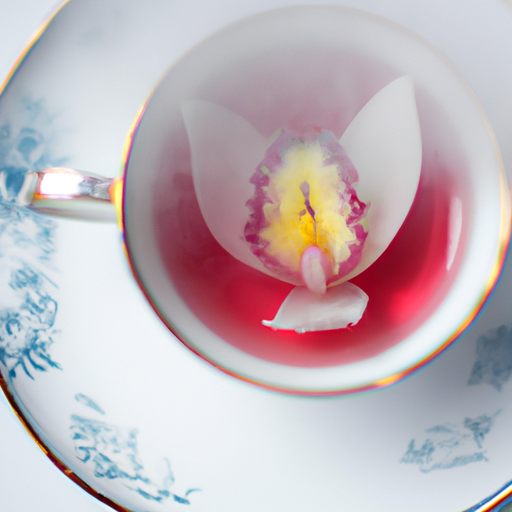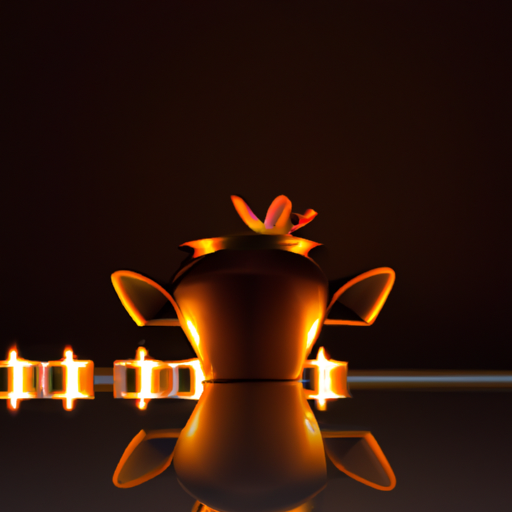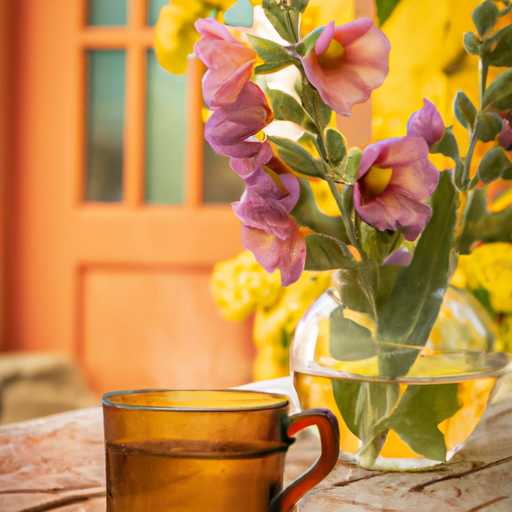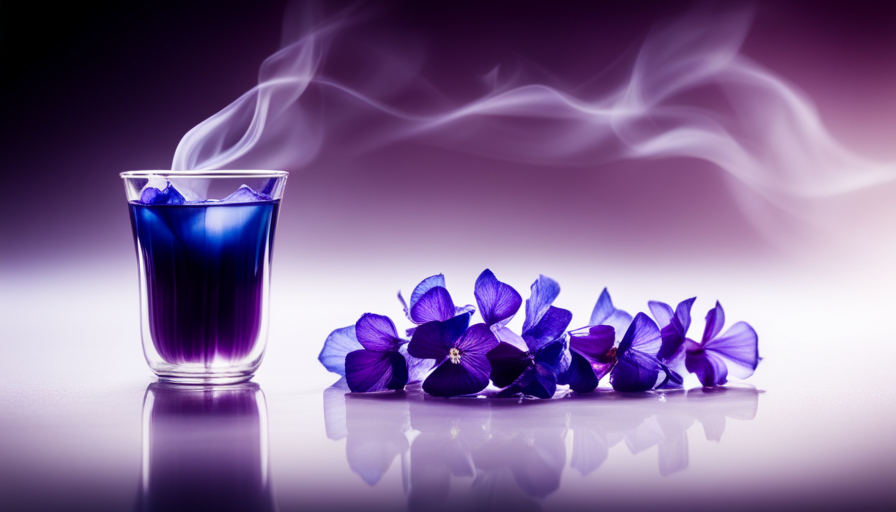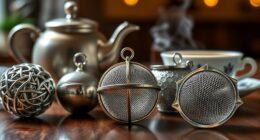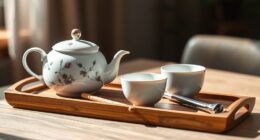As the saying goes, ‘Stop and smell the roses.’ But why stop at just smelling them when you can also drink them? Flower tea, with its delicate aromas and health benefits, offers a sensory experience like no other.
From calming chamomile to invigorating hibiscus, there is a flower tea variety to suit every mood and taste.
In this article, I will guide you through the art of drinking flower tea, from choosing the perfect variety to enhancing your tea experience. With the right brewing method and equipment, you’ll be able to prepare a cup of floral bliss that not only delights your senses but also nourishes your body.
So, let’s dive into the world of flower tea and discover the endless possibilities that await. Get ready to sip, savor, and indulge in the beauty of nature’s blossoms.
Key Takeaways
- Flower tea can be enjoyed through various brewing methods such as hot water infusion, cold brew, and gongfu style.
- Experimenting with different temperatures and steeping times can enhance the flavor and experience of flower tea.
- Adding sweeteners or citrus to flower tea can provide a unique taste and enhance the overall enjoyment.
- Mixing different types of flower tea or herbs can create interesting flavor combinations and expand the possibilities of flower tea.
Choose Your Flower Tea Varieties
Now that you know the benefits of flower tea, let’s dive into the exciting world of choosing your favorite varieties!
Flower teas not only offer a delightful sensory experience but also come with different health benefits. One of the most popular flower tea varieties is chamomile, known for its calming properties and ability to promote better sleep.
If you’re looking for a refreshing option, hibiscus flower tea is a great choice as it’s packed with antioxidants and can aid in lowering blood pressure.
For a floral and fragrant option, lavender flower tea is perfect, known for its stress-reducing properties and ability to improve mood.
Once you’ve selected your preferred flower tea variety, we can move on to the next step of selecting the right brewing method.
Select the Right Brewing Method
First things first, let’s find the perfect way to brew this delicate elixir that’ll transport you to a realm of pure bliss. To fully enjoy your flower tea, it’s essential to master the art of brewing.
Here are three brewing techniques and their recommended steeping times:
-
Hot Water Infusion: This method involves pouring hot water over the flower tea and letting it steep for 3-5 minutes. It works well for most flower teas and extracts the delicate flavors and aromas.
-
Cold Brew: For a refreshing and mild flavor, try cold brewing your flower tea. Simply place the tea in cold water and let it steep in the refrigerator for 4-6 hours or overnight. This method is perfect for hot summer days.
-
Gongfu Style: This traditional Chinese brewing method requires a small teapot and multiple short infusions. Steep the flower tea for 20-30 seconds initially, and then gradually increase the steeping time for subsequent infusions.
Now that you know the brewing techniques and steeping times, let’s move on to preparing your tea equipment.
Prepare Your Tea Equipment
Before brewing my flower tea, I always make sure to clean and season my teapot or infuser. This step ensures that there aren’t any lingering flavors or residues that could affect the taste of my tea.
Additionally, using high-quality filtered water is essential to achieve the best flavor and avoid any impurities that might be present in tap water.
By following these steps, I can ensure that my tea equipment is ready to deliver a delicious and pure cup of flower tea.
Clean and Season Your Teapot or Infuser
To properly enjoy your flower tea, it’s essential to ensure your teapot or infuser is clean and seasoned. Here are four key steps to maintain your teapot and clean your infuser:
-
Start by rinsing your teapot or infuser with warm water. This will remove any dust or residue from previous use.
-
Use a mild dish soap and a soft brush to gently scrub the teapot or infuser. Pay special attention to the corners and crevices to ensure a thorough cleaning.
-
Rinse the teapot or infuser again with warm water to remove any soap residue.
-
After cleaning, season your teapot or infuser by boiling a mixture of water and tea leaves. This will help enhance the flavor of your flower tea.
Once your teapot or infuser is clean and seasoned, you’re ready to move on to the next step: using high-quality filtered water for brewing your flower tea.
Use High-Quality Filtered Water
Once you’ve taken the time to clean and season your teapot or infuser, the next crucial step is ensuring you use only the finest filtered water for brewing your exquisite flower-infused beverage. The quality of water used can greatly affect the taste and aroma of your tea.
High-quality filtered water, free from impurities and chemicals, allows the delicate flavors of the flowers to shine through. Additionally, using filtered water ensures that the tea brews evenly and avoids any unwanted residue or off-flavors. Flower tea benefits from the natural purity of filtered water, enhancing its soothing and refreshing properties.
To achieve the best results, it is recommended to use water that has been filtered through a reliable system.
Now that you have the perfect water, let’s move on to the next step: measuring the correct amount of tea.
Measure the Correct Amount of Tea
Now that you know the benefits of flower tea, let’s talk about how to measure the correct amount of tea to brew the perfect cup. Correct measurement is crucial for achieving the desired flavor and potency of your flower tea. Different brewing techniques require different amounts of tea, so it’s important to follow the instructions specific to the type of flower tea you are using.
To help you get started, here’s a handy table that outlines the recommended tea-to-water ratio for some popular flower teas:
| Flower Tea | Amount of Tea | Amount of Water |
|---|---|---|
| Rose | 1 teaspoon | 8 ounces |
| Chamomile | 1 tablespoon | 8 ounces |
| Lavender | 1 teaspoon | 8 ounces |
| Hibiscus | 1 tablespoon | 8 ounces |
| Jasmine | 1 tablespoon | 8 ounces |
By measuring the correct amount of tea, you’ll ensure a balanced and flavorful cup of flower tea. Now, let’s move on to the next step and learn how to brew and enjoy your flower tea.
Brew and Enjoy Your Flower Tea
Get ready to savor the delightful aromas and flavors of your homemade floral infusion. Brewing and enjoying flower tea not only provides a soothing and relaxing experience but also offers numerous health benefits. Here’s how to brew your flower tea to perfection:
-
Choose the right water temperature: Different flowers require different water temperatures. Boiling water may damage delicate flowers, so opt for lower temperatures between 175-195°F.
-
Steep for the correct time: To extract the maximum flavor and benefits, steep your flower tea for 3-5 minutes. Oversteeping can lead to a bitter taste.
-
Enhance the flavors: Add a squeeze of lemon or a dash of honey to complement the floral notes. You can also experiment with other herbs or spices like mint or ginger for a unique twist.
-
Sip and enjoy: Take small, slow sips to fully appreciate the delicate flavors and benefits of flower tea.
Now, let’s explore how to enhance your flower tea experience by incorporating simple yet effective techniques.
Enhance Your Flower Tea Experience
Immerse yourself in the enchanting world of floral infusions and elevate your tea experience with simple yet effective techniques. Flower tea not only offers a delightful aroma and taste, but it also provides numerous health benefits. Different types of flower tea, such as chamomile, hibiscus, and lavender, each offer their unique advantages. Chamomile tea, for example, promotes relaxation and aids in sleep, while hibiscus tea is known for its ability to lower blood pressure. To enhance your flower tea experience, consider incorporating these techniques:
| Technique | Description |
|---|---|
| Tea Temperature | Experiment with different water temperatures to find the ideal brewing temperature for each type of flower tea. |
| Steeping Time | Adjust the steeping time to achieve the desired strength and flavor of the tea. |
| Sweeteners | Honey, agave, or stevia can enhance the natural sweetness of flower tea. |
| Citrus Additions | A squeeze of lemon or orange can add a refreshing twist to your flower tea. |
| Herbal Combinations | Mix different types of flower tea or add herbs like mint or lemongrass to create unique flavor profiles. |
By exploring flower tea pairings and recipes, you can further expand your knowledge and discover exciting ways to enjoy this exquisite beverage.
Explore Flower Tea Pairings and Recipes
Indulge in the enchantment of flower tea by discovering exciting pairings and recipes that’ll transport your taste buds to a realm of exquisite flavors. Flower tea not only offers a delightful sensory experience but also provides numerous health benefits. The floral infusion ideas below will help you explore the world of flower tea and enhance your tea-drinking ritual:
-
Lavender Chamomile Tea: This calming blend combines the soothing properties of lavender and chamomile, promoting relaxation and aiding in sleep.
-
Rose Green Tea: The delicate aroma of rose petals complements the earthy notes of green tea, creating a refreshing and rejuvenating beverage.
-
Hibiscus Mint Tea: The tartness of hibiscus pairs perfectly with the coolness of mint, resulting in a revitalizing and invigorating drink.
-
Jasmine Oolong Tea: The fragrant jasmine blossoms infuse the smooth oolong tea leaves, offering a subtly sweet and floral taste.
-
Chrysanthemum Pu-erh Tea: The mellow, aged pu-erh tea combines harmoniously with the bright and vibrant chrysanthemum flowers, creating a balanced and soothing brew.
Explore these flower tea pairings and recipes to elevate your tea-drinking experience while enjoying the health benefits of these floral infusions.
Frequently Asked Questions
Can flower tea be made with dried flowers or does it have to be fresh?
Dried flowers work perfectly for making flower tea. They retain their health benefits and can be easily stored. As the saying goes, "Old is gold." So, brew your dried flowers for a delightful and nourishing tea experience.
Can I add sweeteners or milk to my flower tea?
Yes, you can add sweeteners or milk to flower tea. Adding certain sweeteners, like honey or stevia, can enhance the flavor of the tea. Milk can also be added to create a creamy texture.
How long can flower tea be stored and still maintain its flavor?
Flower tea should be stored in an airtight container in a cool, dark place to maintain its flavor. It’s best to harvest flowers for tea when they are fully bloomed but before they start to wilt.
Are there any potential side effects or allergies associated with drinking flower tea?
Drinking flower tea can have potential health benefits, but it’s important to be aware of potential side effects and allergies. For example, some people may experience allergic reactions to certain flowers. It’s best to consult with a healthcare professional before trying flower tea. The best time to drink flower tea varies depending on the type of flower, but generally, it can be enjoyed throughout the day.
Can flower tea be consumed cold or is it best served hot?
Flower tea can be enjoyed both hot and cold. Cold flower tea is a refreshing option, especially during hot weather. It retains the health benefits of flower tea, such as antioxidants and relaxation properties.
Conclusion
In conclusion, drinking flower tea is a delightful and refreshing experience that can be enjoyed in various ways. By selecting the right flower tea varieties, brewing method, and equipment, you can create a perfect cup of flower tea every time.
Remember to measure the correct amount of tea to ensure the ideal flavor and aroma. Don’t forget to enhance your flower tea experience by adding a touch of honey or lemon.
As the saying goes, "A cup of flower tea is like a garden in a cup, blooming with flavor and tranquility." So, sit back, relax, and savor the beauty of flower tea.

